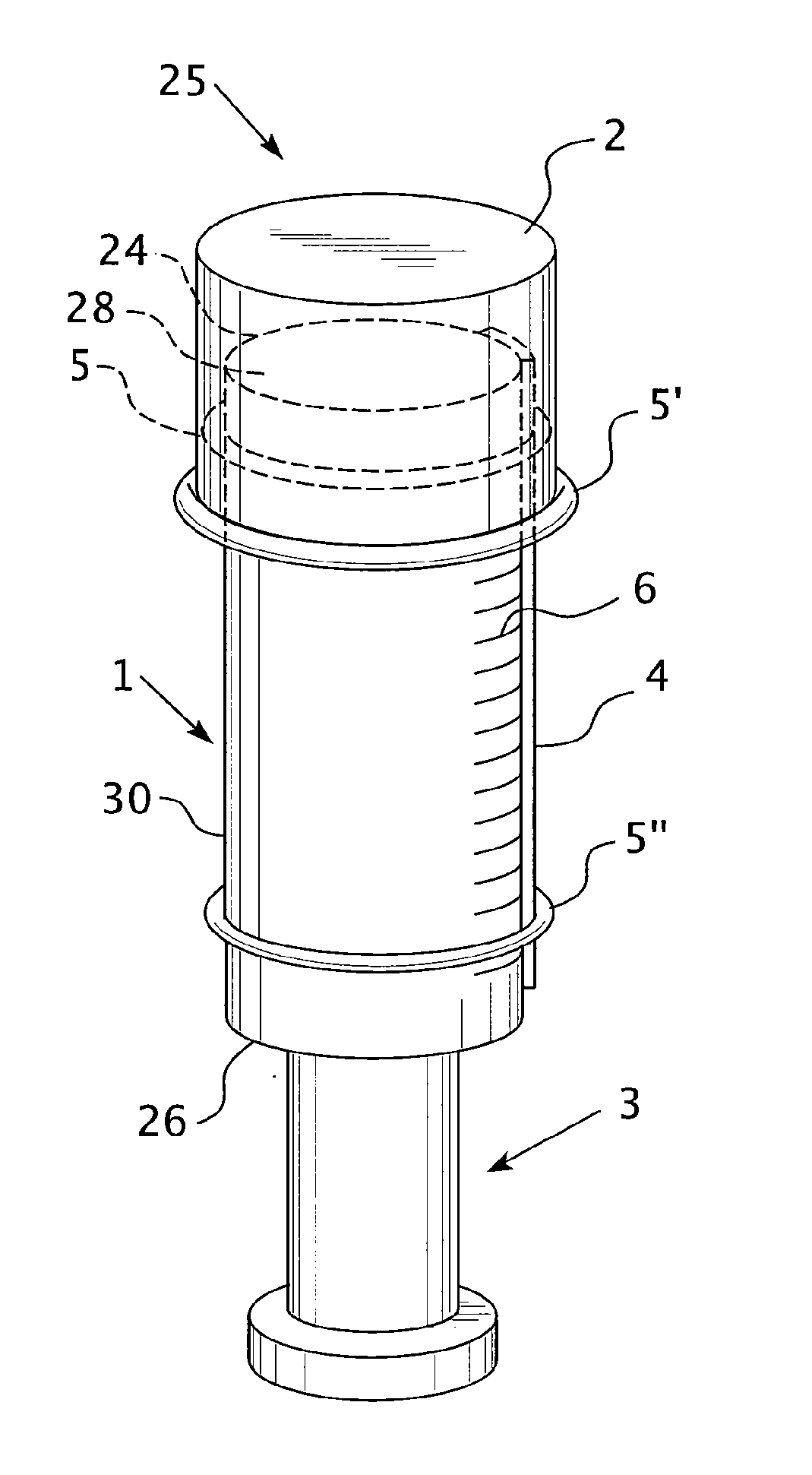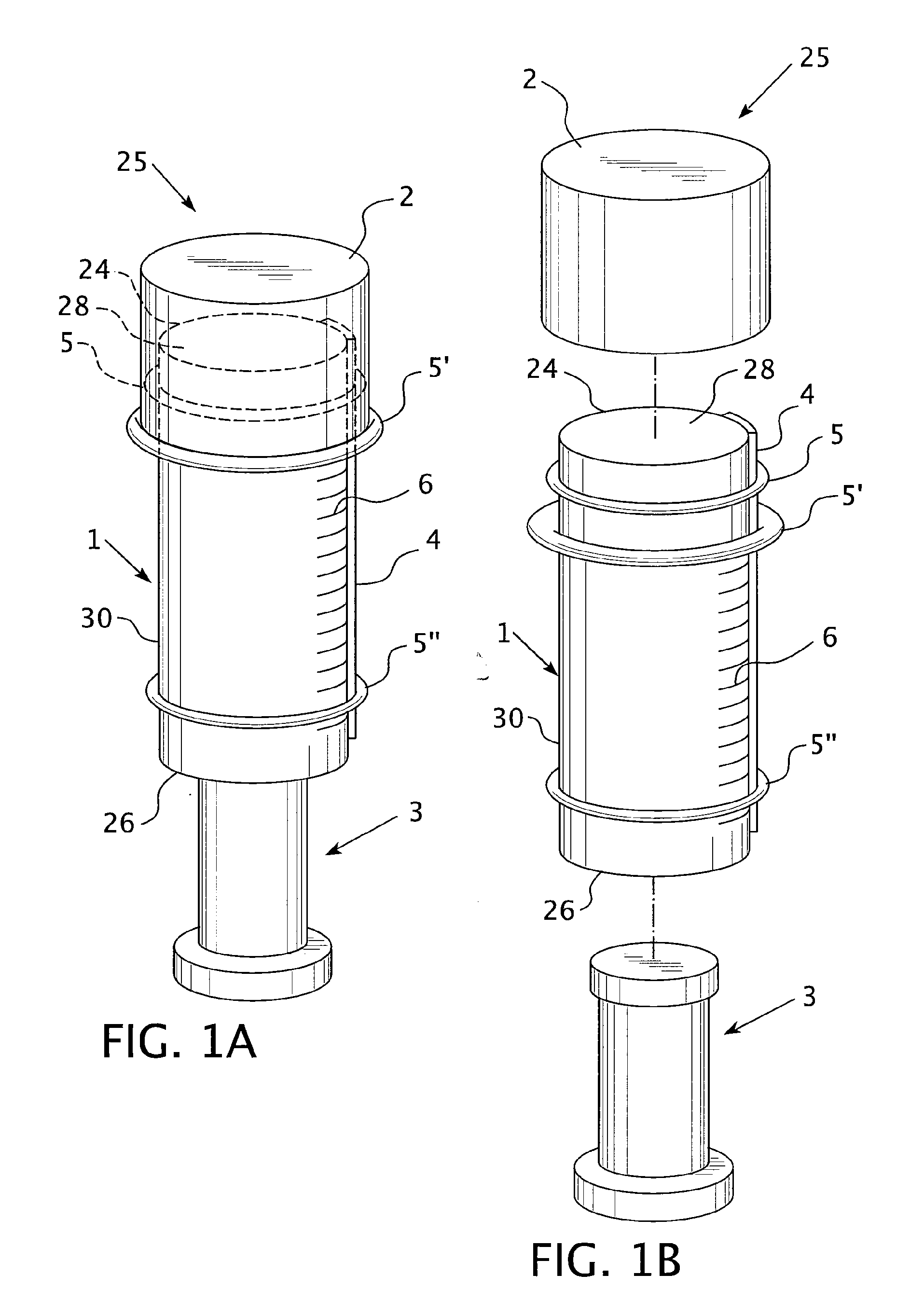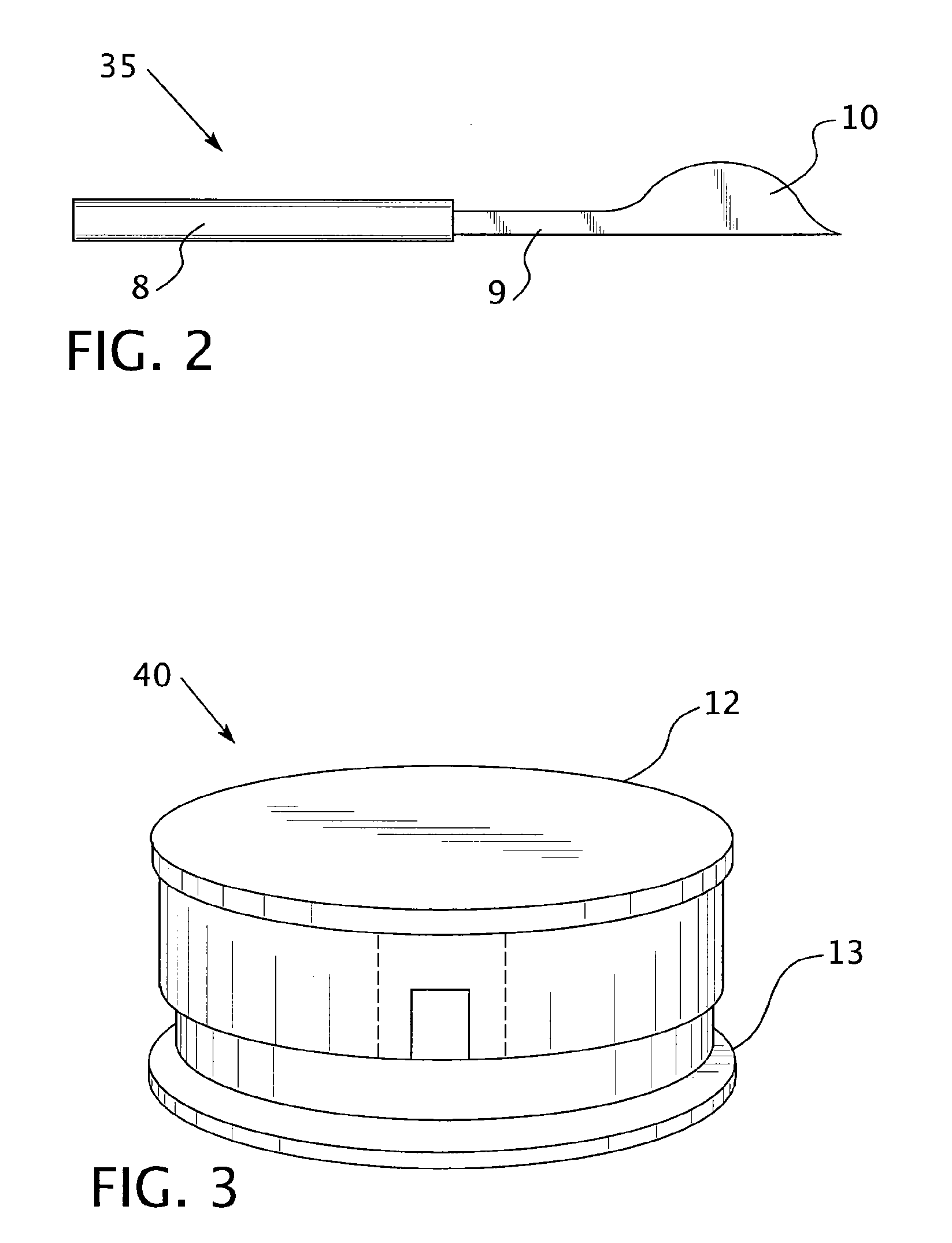Apparatus for making a solid nutrient medium and associated method
a technology of nutrient medium and apparatus, which is applied in the direction of specific use bioreactor/fermenter, biomass after-treatment, microorganisms, etc., to achieve the effect of preventing accurate counting of cells in colonies, facilitating absorption of chromogenic substrates, and increasing reliability and sensitivity of analysis
- Summary
- Abstract
- Description
- Claims
- Application Information
AI Technical Summary
Benefits of technology
Problems solved by technology
Method used
Image
Examples
example 1
Analysis of Total Viable Microorganisms in Tap Water
[0094] In this investigation, 50 mL of water was filtrated through a regular filtration device with the use of a nitrocellulose filter (25 mm diameter, 0.2 μk pores, Pall Corporation). Nutrient agar (TSA, Remel, Inc.) was cut into a slice having a thickness of about 3 mm from a container of the present invention with the help of a previously flamed knife for slicing. The nutrient agar slice was transferred into the middle of a growth plate of the present invention. A filter containing sediment microorganisms was transferred onto the top of the nutrient agar slice. The growth plate was closed with the growth plate lid and the closed growth plate was placed in an incubator at 35° C. After 15 hours, 0.5 ml of an MTT solution (1 mg / ml) in phosphate buffer (pH 8.0) was added between the inner dish ring and the middle dish ring of the growth plate. The growth plate with nutrient agar and filter then was incubated for 3 more hours. After...
example 2
Rapid Detection of Urinary Tract Infections
[0095] Rapid detection of microorganisms in human samples often is vital for timely patient treatment. Rapid detection of micro-colonies can be done with the use of a micro-channel plate (micro-channel technology) as described in U.S. Published Patent Application No. 20050026135.
[0096] In this investigation, a micro-channel plate was attached above a filter and fixed in a special frame used for filtration of a sample. Nutrient agar (TSA, 5 mm thickness) was sliced from a container of the present invention and placed in the middle of a growth plate of the present invention. The frame containing the micro-channel plate and filter was placed in the middle of the growth plate. The frame was placed between the middle dish ring and the inner dish ring of the growth plate and nutrient agar was attached to the filter. Nutrient substances from the nutrient agar were allowed to fill all of the micro-channels of the micro-channel plate. After placin...
example 3
Determination of E. Coli in a Grape Juice Sample by Fluorescence for Quality Control Purposes
[0098] In this investigation, a liquid sample, presumably containing E. coli, was filtered through a black nitrocellulose filter (25 mm in diameter and 0.2 μk pores; Pall Corporation). Nutrient agar (MacConkey Agar, Difco Corp.) was prepared in a storage container of the present invention, sliced (3 mm thickness), and moved to a growth plate of the present invention. The filter was mounted above the growth plate. The growth plate was closed with a growth plate lid of the present invention and the closed growth plate was incubated for 24 hours at 38° C. After incubation, 0.5 mL of a fluorogenic substrate, 4-methylumbelliferyl-β-D-glucuronide (0.1 mg / ml of 20% ethanol and 80% distilled water), was added between the inner dish ring and the middle dish ring of the growth plate. Colonies of E. coli obtained a bright blue fluorescence within the 20-30 minutes after the fluorogenic substrate was a...
PUM
 Login to View More
Login to View More Abstract
Description
Claims
Application Information
 Login to View More
Login to View More - R&D
- Intellectual Property
- Life Sciences
- Materials
- Tech Scout
- Unparalleled Data Quality
- Higher Quality Content
- 60% Fewer Hallucinations
Browse by: Latest US Patents, China's latest patents, Technical Efficacy Thesaurus, Application Domain, Technology Topic, Popular Technical Reports.
© 2025 PatSnap. All rights reserved.Legal|Privacy policy|Modern Slavery Act Transparency Statement|Sitemap|About US| Contact US: help@patsnap.com



